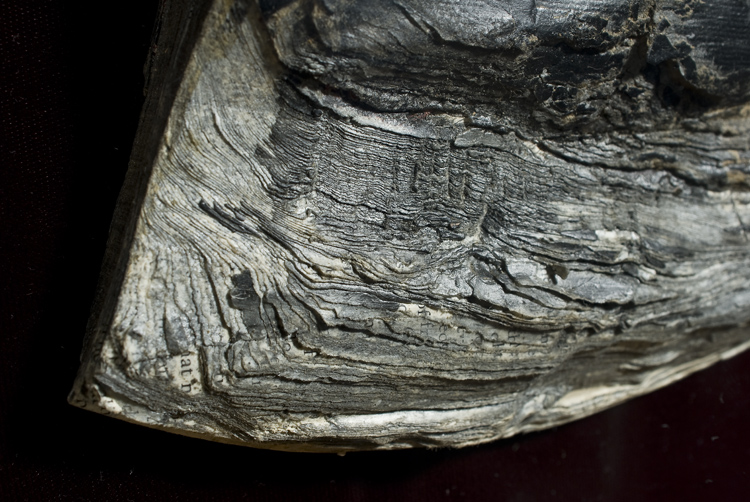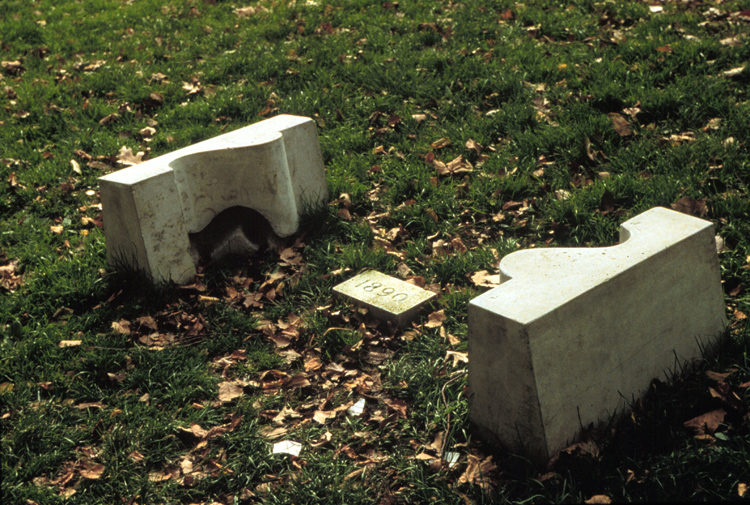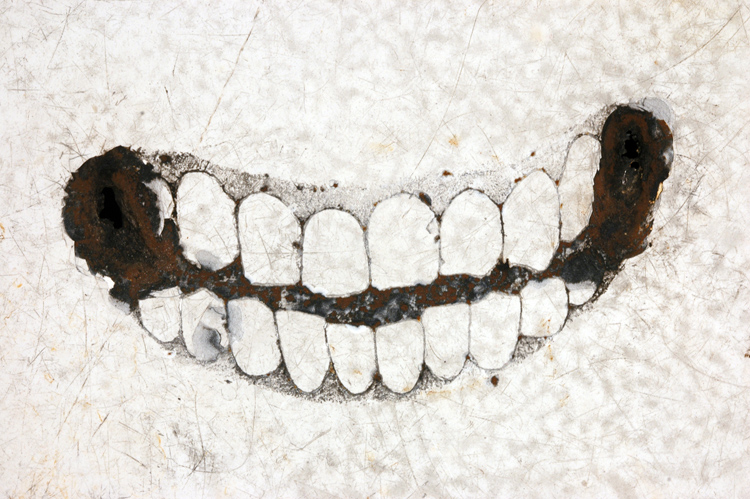
1988
altered book, wax, pigment, wood in glass and wood case
14 1/2 x 41 1/2 x 4 7/8 inches
prop made for a performance/lecture, New School of Social Research, New York City
“A book must be the axe for the frozen sea inside us.” – Franz Kafka
“My very first lecture in New York City was in 1987 and I was nervous because it was at the New School for Social Research. I was paralyzed because I was asked to address graduate students of philosophy and psychology. I was so worried that the philosophers would know that I didn’t know what I was talking about and the psychologists would understand and dig out this buried secret of my early childhood trauma.
Being freaked, I decided to make something. I took a two-by-four and cut and ax handle. I took a book and cut out the ax head. I stuffed some notes in there and I sharpened it up and waxed it shut. I wrapped the whole thing in newspaper, went downstairs to the local store, bought a six-pack of Budweiser and went to the lecture. They had placed a U-shaped table in the room and everybody was smoking pipes—a bunch of guys smoking pipes. I sat down and put the newspaper down and I started drinking beer as fast as I could.
After the third beer the head of the school of philosophy said, “Mr. Chin, I think it is time to start” At that moment, being allergic to alcohol, I suddenly turned red. I had a headache and I was already edgy, so I just ripped off the newspaper, picked it up and said,” This is an ax!” The head of the psychology department said, “What the fuck you gonna do, man?” I turned around and slammed the ax into the blackboard. It broke apart and the notes fluttered down. I read from the notes. I was still shaking but I was drunk; it didn’t matter.
When the guy from the school of philosophy said, “I’d like to talk a little bit about Plato’s shadows.”I said, “I don’t want to talk about no damn shadows.”He said,”That’s fine, cool, that’s cool.”
Actually, it was a very successful lecture, but the lesson it taught me is that objects are incredibly loaded. Words and human expression can do some of the work yet objects themselves are loaded with a wealth of information and power and possibilities. Even as noted in Homer, “the arrow that strikes Achilles is freighted with dark pain.” I call that piece Lecture Ax.
-Mel Chin, from a lecture, “My Relation to Joseph Beuys is Overrated.” Printed in Mapping the Legacy, Gene Ray, ed., The John and Mabel Ringling Museum of Art, D.A.P., New York, NY, 2001


 Labrador Duck: 1875
Labrador Duck: 1875 Heath Hen: 1932
Heath Hen: 1932
 Passenger Pigeon: 1914
Passenger Pigeon: 1914












